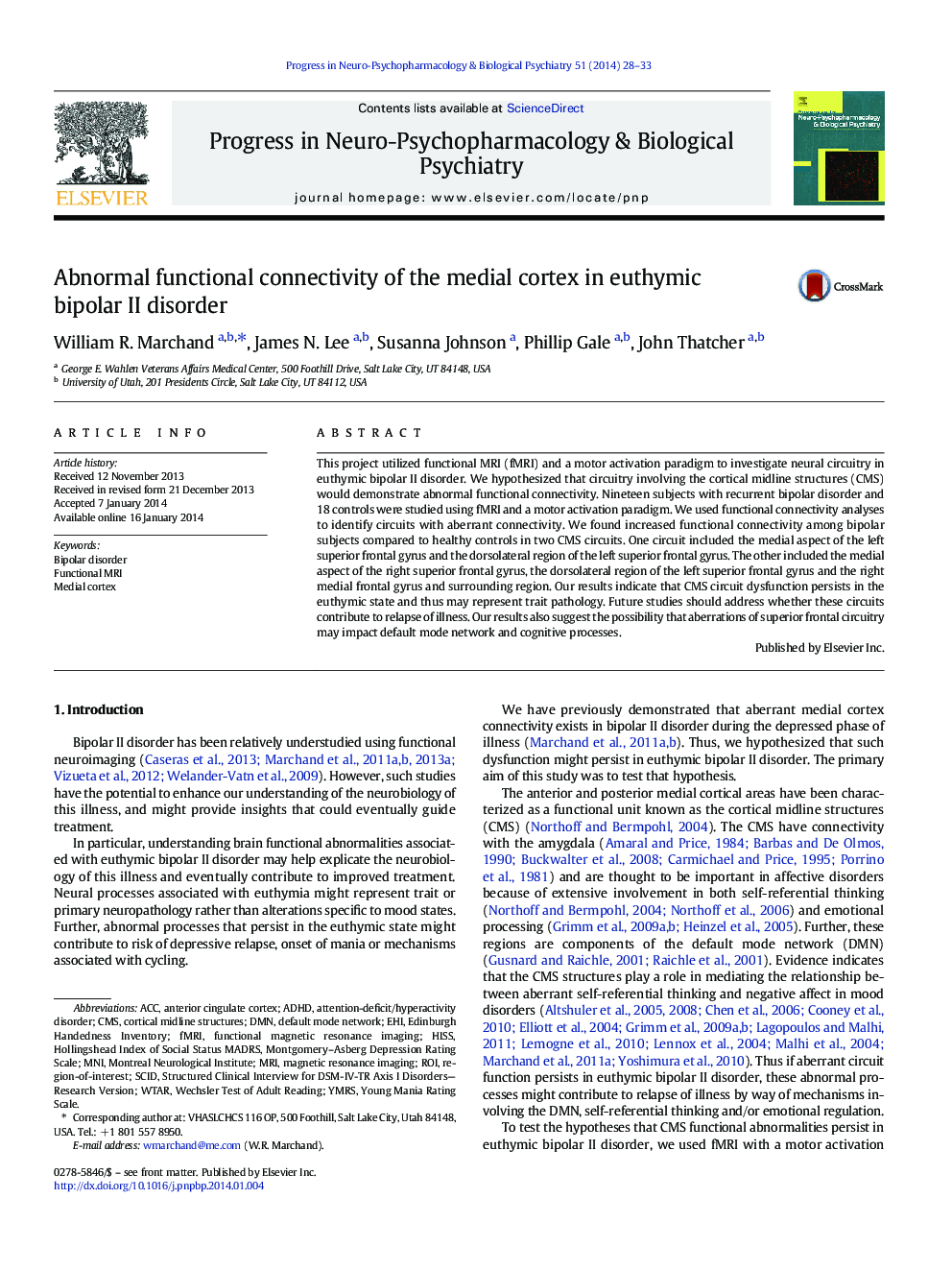| Article ID | Journal | Published Year | Pages | File Type |
|---|---|---|---|---|
| 2564836 | Progress in Neuro-Psychopharmacology and Biological Psychiatry | 2014 | 6 Pages |
•Neural abnormalities in remitted bipolar II disorder may contribute to relapse.•Medial cortex circuitry aberrations persist in euthymia.•These circuit disruptions may impact the default mode network.
This project utilized functional MRI (fMRI) and a motor activation paradigm to investigate neural circuitry in euthymic bipolar II disorder. We hypothesized that circuitry involving the cortical midline structures (CMS) would demonstrate abnormal functional connectivity. Nineteen subjects with recurrent bipolar disorder and 18 controls were studied using fMRI and a motor activation paradigm. We used functional connectivity analyses to identify circuits with aberrant connectivity. We found increased functional connectivity among bipolar subjects compared to healthy controls in two CMS circuits. One circuit included the medial aspect of the left superior frontal gyrus and the dorsolateral region of the left superior frontal gyrus. The other included the medial aspect of the right superior frontal gyrus, the dorsolateral region of the left superior frontal gyrus and the right medial frontal gyrus and surrounding region. Our results indicate that CMS circuit dysfunction persists in the euthymic state and thus may represent trait pathology. Future studies should address whether these circuits contribute to relapse of illness. Our results also suggest the possibility that aberrations of superior frontal circuitry may impact default mode network and cognitive processes.
